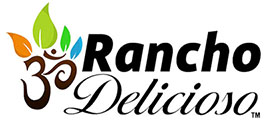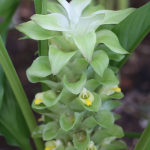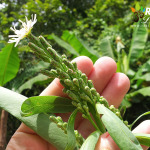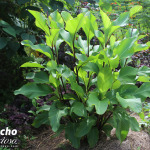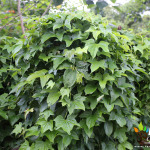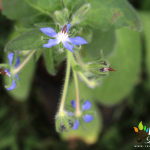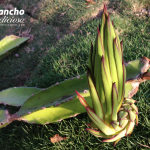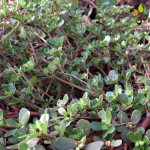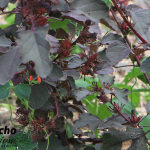Plant Quiz Answers
Here are answers to the tropical plant quiz.
Turmeric Flower
This large, exotic flower comes out of the tumeric plant. Tumeric’s bright orange roots are perhaps the most super of all superfoods, with myriad health benefits, especially good for the brain. It can also be used as a dye and stains nearly everything it touches. If you can find turmeric in a store, you can break it into nodules and just replant it, and it will spread out, creating a whole patch.
Indian Lettuce
This plant is very difficult to find in the U.S., be we found the seeds here in Costa rica. It grows two meters tall and you harvest the yummy lettuce leaves from the bottom up as it grows. It produces its seeds at the end and you can replant them. It loves the tropical climate and grows very easily here in full sun or partial shade. So far, it’s worked well under every condition we’ve tried it. We got the seeds from Granos Paz. Apparently it’s originally from India.
Arrowroot
This starchy root of the arrowroot plant can be dehydrated and pulverized in a vitamix to make a healthy, sticky flower that replaces gluten-type flours in baking recipes such as a wheat-free pizza dough, bread, cakes, or other bread-type foods that tend to be too dry when made gluten-free. It has brilliantly bright red flowers too and works great as a garden ornamental. It grows very easily here in Costa Rica, and you can easily propagate it by taking out root sections and replanting them.
Tropical White Potato
A lucky discovery, these potato vines grew from white potatoes I purchased in a grocery store in Dominical. While many sweet potatoes grow in the tropics, it’s very difficult to find a white potato that grows here, because usually they just rot in the ground. Ours are growing like crazy, and have covered a trellis to make the shape you see in this photo. If anyone knows the proper name of this, or how to get it to produce potatoes, let us know, because so far it’s only producing the leaves!
Borage
Borage is used in polyculture gardening primarily to attract pollinators. It’s sweet smell attracts bees to the garden, and they end up finding more of the other types of flowers you want them to. The five-pointed star-shaped borage flowers are also sweet and edible, and are great for decorating gourmet farm-to-table dishes. They grow rapidly and easily here in the tropics, are great to have mixed in with nearly any other type of plant.
Dragonfruit Flower
This gorgeous flower comes out of the dragonfruit plant before it creates the actual fruit. In the background you can see that dragonfruit is a cactus, and even stranger, it’s an epiphyte. Like orchids, epiphytic plants cling to other trees rather than growing on the ground, and they spread out on a plant like slow-growing tenacles, sticking to a host tree’s bark. There are many colors of dragonfruit, but they’re all sweet and yummy.
Katuk
Katuk is one of the world’s rare types of trees that produces edible leaves. They are surprisingly delicious, and at some places they grow large patches of them to use as their primary green in salads and for cooking like spinach. You can’t have too much katuk. These trees grow at most around 2.5 meters tall, and they don’t like the full sun of the tropics, so plant them next to or just underneath larger trees with patchy sunlight.
Purslane
Known as Verdolaga in spanish, this grown-hugging succulent plant will grow as a weed all over your farm once you plant some of it. Actually you probably already have it. We did, and it was an easy task to nurture it to rapidly spread. We let it grow wherever it wants to be, since it has the highest level of Omega 3 essential fatty acids of any plant in the world. Plants that have a good amount of oils are rare, so purslane is a true superfood for the permaculture garden, and it grows in most climate zones.
Malabar Spinach
Malabar spinach grows easily here in the tropical climate, producing a large quantity of edible leaves. The vines grow only 2-3 meters long before the plants die out, but it’s easily regrown from its own seeds. It’s dark purple berries can also be used as a dye. The leaves are “Mucilaginous” meaning that they’re slimy. So like Okra, they take special knowledge of how to prepare them to reduce the slime factor.
Cranberry Hibiscus
The pretty burgundy plant grows up to two meters high, and its leaves are edible. Despite its color, it’s a great tropical “green” and is good mixed into exotic salads, or just to munch on when you’re working in the garden. It has a sour and sweet flavor that’s reminiscent of cranberries, hence its name. Another great use is for making tea. This plant also produces seeds that are easily harvested and planted to grow more.
